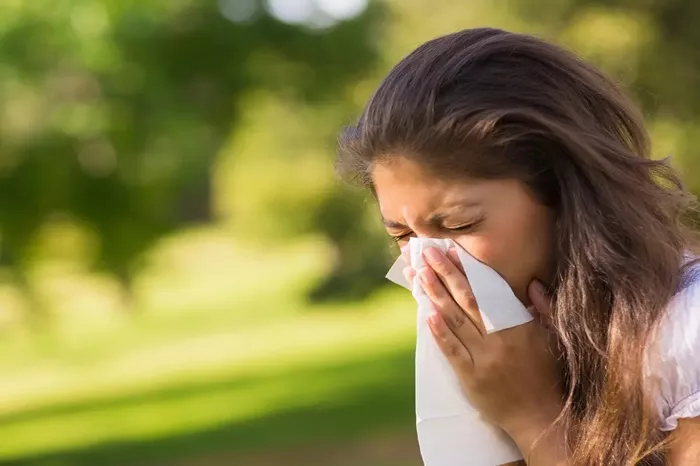Cat allergies affect millions of people worldwide, causing symptoms such as sneezing, itching, and nasal congestion upon exposure to cat dander. While there is currently no known cure for cat allergies, there are several treatment options available to help manage symptoms and improve quality of life. In this article, we’ll explore the complexities of cat allergies, examine potential treatment approaches, and delve into ongoing research aimed at finding a cure.
Understanding Cat Allergies
Cat allergies are caused by an allergic reaction to proteins found in the saliva, urine, and dander (dead skin cells) of cats. When a person with a cat allergy comes into contact with these proteins, their immune system mistakenly identifies them as harmful invaders and releases chemicals such as histamine to defend against them. This immune response triggers symptoms such as sneezing, runny nose, itchy eyes, and skin rash.
It’s important to note that cat allergies can vary in severity from mild to severe, and individuals with allergies may react differently to different cats. Additionally, cat allergies can develop at any age, even in individuals who have previously lived with cats without experiencing symptoms.
Treatment Options for Cat Allergies
While there is no cure for cat allergies, there are several treatment options available to help manage symptoms and reduce allergic reactions:
1. Avoidance: The most effective way to prevent allergic reactions to cats is to avoid exposure to cat allergens. This may involve keeping cats out of certain areas of the home, using high-efficiency particulate air (HEPA) filters to remove allergens from the air, and regularly cleaning and vacuuming to minimize the buildup of cat dander.
2. Medications: Over-the-counter and prescription medications can help alleviate symptoms of cat allergies. Antihistamines such as loratadine (Claritin) and cetirizine (Zyrtec) can reduce sneezing, itching, and nasal congestion, while nasal corticosteroids such as fluticasone (Flonase) can help decrease inflammation and nasal symptoms. Decongestants and allergy eye drops may also be used to relieve symptoms.
3. Immunotherapy: Allergy shots, also known as immunotherapy, can help desensitize the immune system to cat allergens over time. Immunotherapy involves receiving regular injections of gradually increasing doses of cat allergens, with the goal of reducing allergic reactions and symptoms. While immunotherapy can be effective for some individuals, it requires a long-term commitment and may not be suitable for everyone.
4. Allergy Tablets: Sublingual immunotherapy tablets, which are placed under the tongue and dissolve rapidly, are another form of immunotherapy that may be used to treat cat allergies. These tablets contain extracts of cat allergens and work in a similar way to allergy shots by helping to desensitize the immune system to cat allergens over time.
5. Allergy Nasal Sprays: Prescription nasal sprays such as azelastine (Astelin) and olopatadine (Patanase) can help relieve nasal symptoms of cat allergies by blocking the release of histamine and other chemicals involved in the allergic response. These sprays are typically used on an as-needed basis to provide rapid relief of symptoms.
Ongoing Research and Potential Cures
While current treatment options for cat allergies focus on managing symptoms and reducing allergic reactions, researchers are actively exploring potential cures and novel treatment approaches. Some areas of ongoing research include:
1. Biologic Therapies: Biologic therapies, which target specific molecules involved in the allergic response, are being investigated as potential treatments for cat allergies. These therapies aim to modulate the immune system’s response to cat allergens and prevent allergic reactions from occurring.
2. Gene Therapy: Gene therapy, which involves modifying the genetic makeup of cells to prevent them from producing allergic antibodies, is being explored as a potential treatment for cat allergies. By targeting the underlying genetic mechanisms of allergic reactions, gene therapy holds promise for providing long-lasting relief from cat allergies.
3. Allergen-specific Immunotherapy: Researchers are investigating new forms of allergen-specific immunotherapy that may be more convenient and effective than traditional allergy shots. These include oral immunotherapy tablets, sublingual immunotherapy drops, and modified allergen extracts designed to reduce allergic reactions and improve tolerance to cat allergens.
4. Vaccine Development: Vaccine development for cat allergies is another area of active research. Vaccines containing modified cat allergens or synthetic peptides designed to induce immune tolerance are being studied as potential treatments for cat allergies. These vaccines aim to train the immune system to recognize cat allergens as harmless, thereby preventing allergic reactions from occurring.
While these potential cures for cat allergies show promise, it’s important to recognize that research is still ongoing, and it may take several years before new treatments become available. In the meantime, individuals with cat allergies can continue to manage their symptoms effectively using existing treatment options and strategies.
Conclusion
While there is currently no known cure for cat allergies, several treatment options are available to help manage symptoms and reduce allergic reactions. From avoidance strategies and medications to immunotherapy and ongoing research into potential cures, individuals with cat allergies have access to a range of options for improving their quality of life. By working closely with allergists and healthcare providers, individuals with cat allergies can develop personalized treatment plans that address their unique needs and preferences. With continued research and advancements in allergy treatment, the hope for a cure for cat allergies remains strong.
[inline_related_posts title=”You Might Be Interested In” title_align=”left” style=”list” number=”6″ align=”none” ids=”6593,6590,6587″ by=”categories” orderby=”rand” order=”DESC” hide_thumb=”no” thumb_right=”no” views=”no” date=”yes” grid_columns=”2″ post_type=”” tax=””]
































